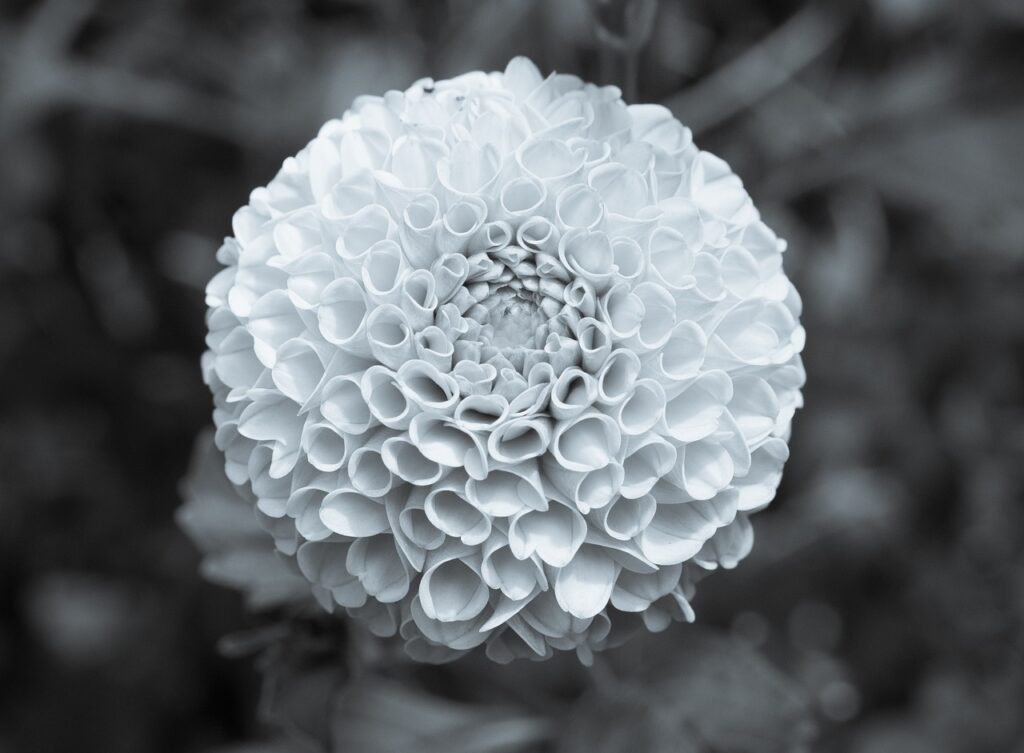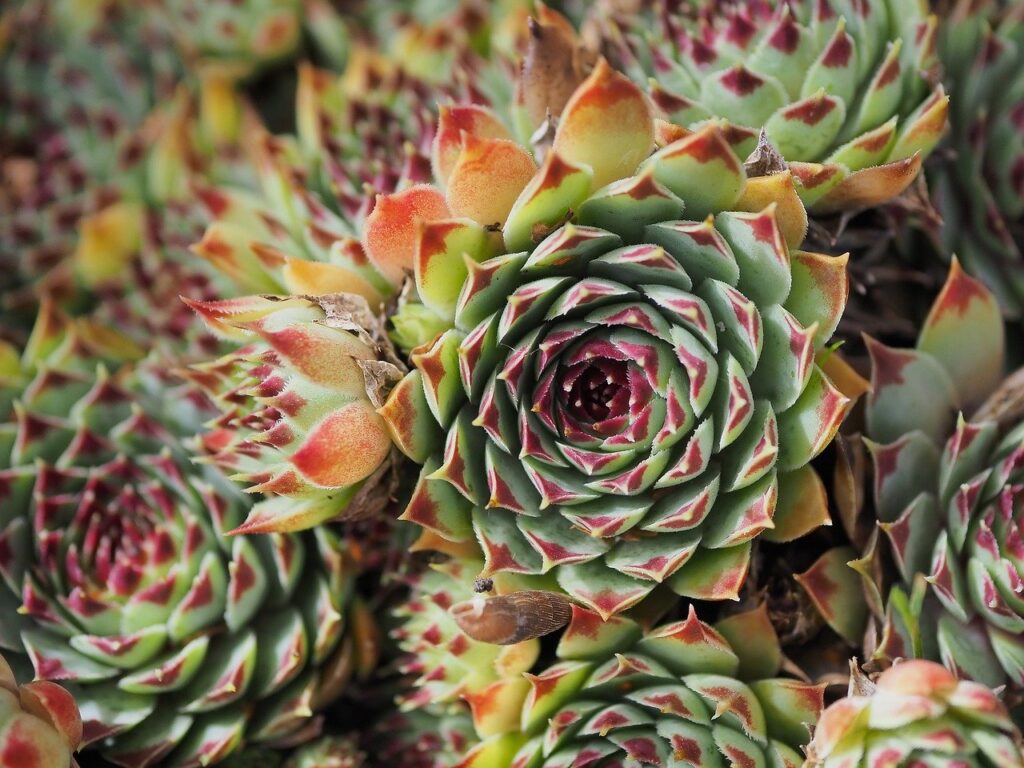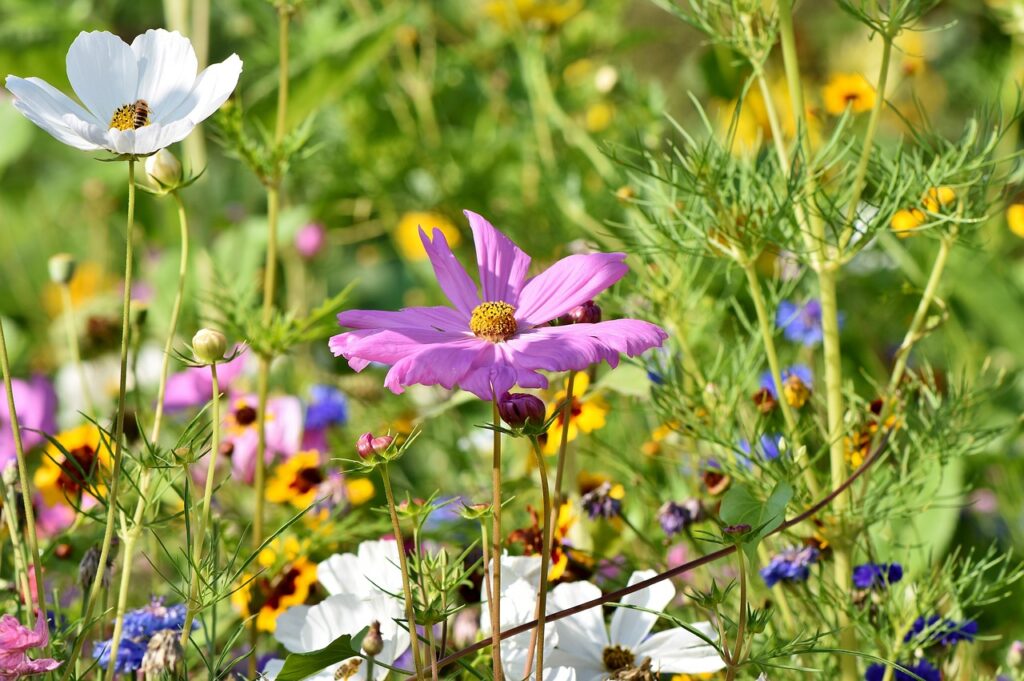White marigolds offer an incredibly beautiful alternative, to the more common yellow and orange marigolds that are found in gardens around the world. These pale blossoms are a striking and attractive addition to any garden with large and fluffy blooms that span up to three inches in diameter. In this post, we’ll explore the numerous benefits of growing white marigolds. This includes, but isn’t limited to, their adaptability, medicinal attributes, and ability to attract pollinators. Marigolds attract butterflies and other insects, the benefits of this, are obvious.
As an Amazon and ebay Affiliate we may earn a commission off any purchases made through our links. This won’t affect the price you pay.
Adaptability
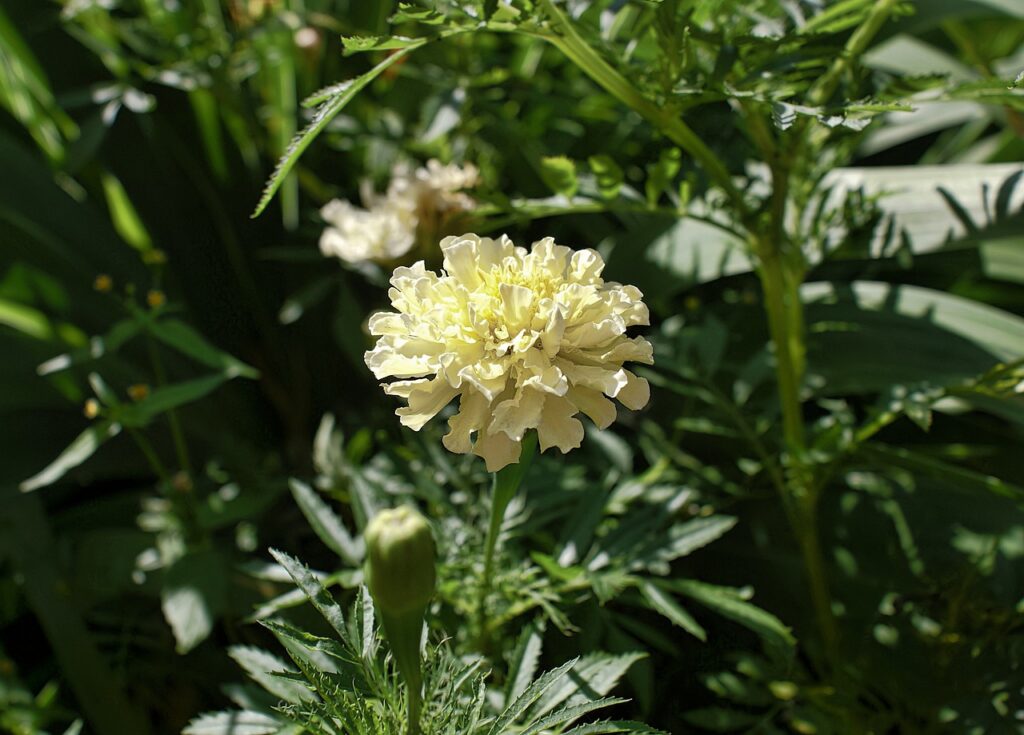
White marigolds are hardy and adaptable and can survive in a wide range of growing conditions and environments. They can thrive in both full sun and partial shade, making them a versatile choice for any garden. They tend to grow well in a variety of soil types, just ensure the soil is well-draining and rich in nutrients. (Compost and sand can be added to soils to help this).
If you’re objective is to grow white marigolds in a container garden or pots, make sure to use containers with good drainage and fill them with a high-quality potting mix. This aid drainage and prevent the soil from becoming waterlogged. It will also ensure that the plant has access to the nutrients it needs to grow.
White marigolds are part of the Sunflower family and share many of their hardy, tough attributes. This means they share many of the same traits as other sunflowers. They are drought tolerant and thrive in hot temperatures.
Medicinal Properties
In addition to their beauty, white marigolds also have medicinal properties that have been used for centuries. There are compounds, found in the flowers and leaves, that can be used to treat a variety of ailments, including headaches, inflammation, and stomach issues. Nature’s gift!
White marigold tea is a well known remedy for stomach and digestive issues. It has been shown to help reduce inflammation in the digestive tract and relieve symptoms of nausea and vomiting. To brew white marigold tea, soak a handful of dried flowers or leaves in boiling water for 5-10 minutes. Then strain, drink and enjoy.
Topically, white marigolds can also be used to help treat skin conditions such as acne and eczema. The flowers contain anti-inflammatory compounds that can help soothe irritated skin and reduce redness. To make a white marigold salve or ointment, soak a handful of dried flowers in a carrier oil such as coconut or olive oil (avocado oil will work too) for a few weeks, then strain and use the oil to make a healing salve.
Pollinator Benefits
White marigolds are excellent for attracting pollinators to your garden. Their brightly colored petals are irresistible to bees, butterflies, and other wildlife, making them a valuable addition to any ecological landscape.
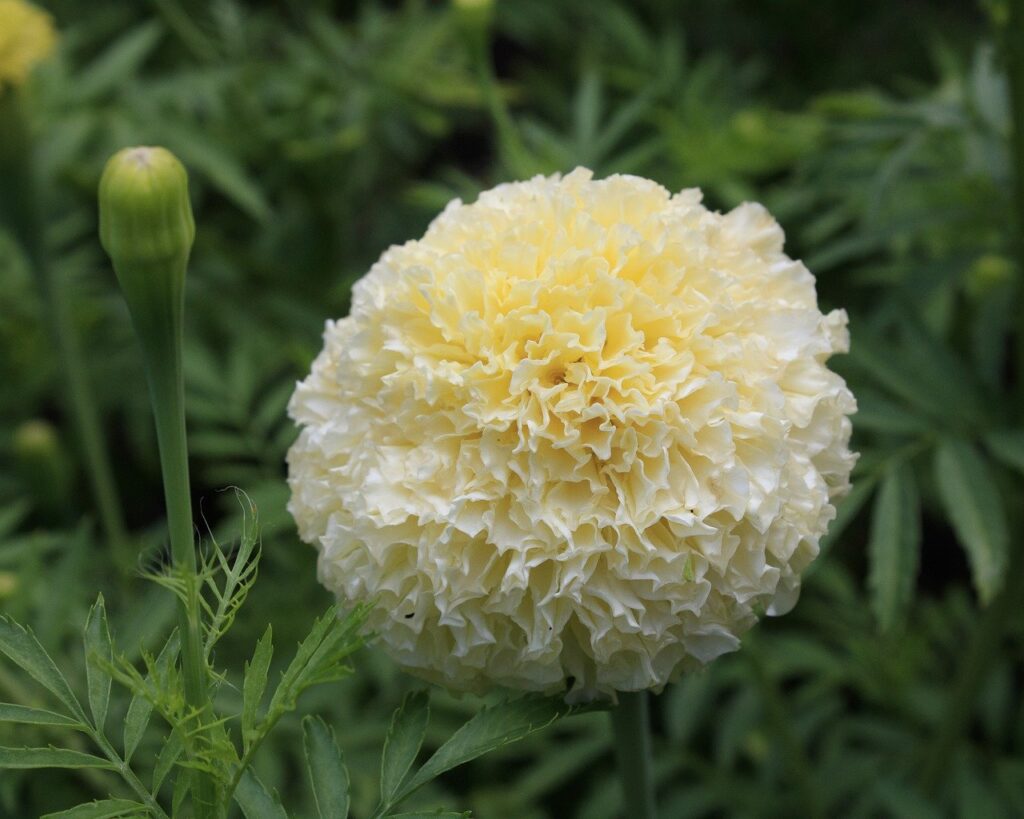
It is common knowledge that pollinators are essential for the health and survival of many plant species, including fruits and vegetables. By planting white marigolds in your garden, you are not only adding beauty and diversity to your landscape, but you are also contributing to the health of the ecosystem around you.
Other Benefits of White Marigolds
There are other benefits, in addition to the adaptability, medicinal properties, and pollinator benefits.
One of the rewarding benefits of growing white marigolds is their ability to repel pests. Marigolds contain natural compounds that are toxic to many common garden pests, including aphids, whiteflies, and nematodes. By planting white marigolds around the perimeter of your garden, you can help keep these pests at bay and protect your other plants from damage.
White marigolds also make excellent companion plants. Their ability to help attract beneficial insects to your garden, such as ladybugs and lacewings is a really helpful in the fight against pests, as these can help control other pests that may be damaging your plants. Additionally, they can help improve soil health by adding nutrients back into the soil as they decompose.
Growing White Marigolds
Growing white marigolds in your garden, may begin by sowing the seeds indoors. Start indoors and this will give you greater control over the growing conditions. This allows you to give them the best start possible. Start with the 6 steps below:
1. Choose a high-quality potting mix: To start your white marigold seeds (or any seeds for that matter), you need to start with a high-quality potting mix that is rich in organic matter. As such, we recommended that you buy a mix specifically designed for seed starting and growing. These will have the right balance of moisture retention and drainage.
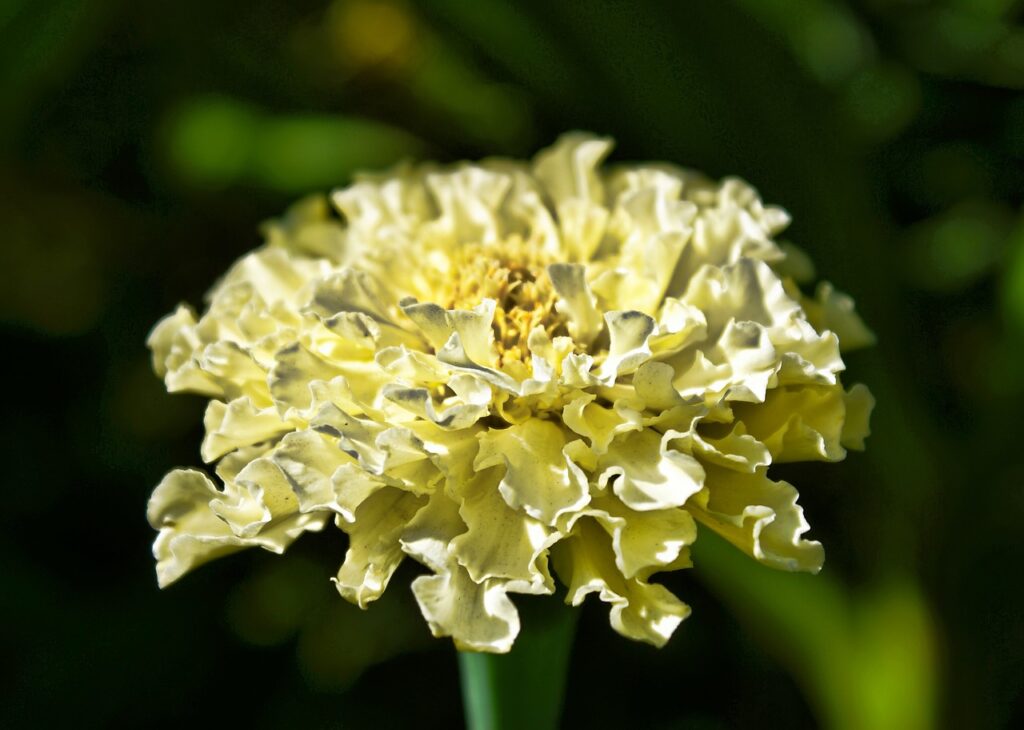
2. Sow your seeds: Fill a seed tray or individual pots with your potting mix, remember to make sure that you leave a little room at the top for watering. Sow your seeds according to the packet instructions, which will usually recommend spacing them around an inch apart.
3. Water your seeds: Once you’ve sown your seeds, it’s vital to give them a gentle watering to settle them in. You’ll want to keep the soil moist but not swamped or waterlogged. Too much water can lead to damping off or fungal growth.
4. Provide the right growing conditions: To ensure your white marigold seeds germinate successfully, you’ll need to provide the right growing conditions. Marigolds prefer warm conditions with plenty of light. Keep them in a warm, sunny spot that gets at least six hours of sunlight per day.
5. Avoid frost: White marigolds can be sensitive to frost. It’s important to keep them indoors until all danger of frost has passed. Once the weather warms up, you can move them outside to acclimate to their new environment.
6. Transplant your seedlings: Once your seedlings are large enough, you can transplant them into larger pots and containers or move them outdoors to their desired growing spot. Remember to choose a well-draining soil that is rich in nutrients, and water them regularly to keep the soil moist.
Growing Organically
If your aim is to grow white marigolds organically, there are a few things to keep in mind. Always use an organic potting mix that doesn’t contain synthetic fertilizers and pesticides. Some good organic options you can use are compost or worm castings, and these will provide the nutrients your marigolds need to grow.

To avoid pest problems, companion plants can really go a long way to helping keep pests at bay. For example. some plants repel pests are garlic, chives, and basil. To maximise beneficial insect attraction, plant marigolds with other companion plants that attract beneficial insects, such as yarrow or alyssum.
When to Start Sowing
Ideal times for sowing your white marigold seeds will depend on your location, climate and growing conditions. Always start your seeds indoors around six to eight weeks before the last frost date in your area. This will also give your seedlings sufficient time to grow and develop strong roots before being planted outdoors.
Check with your local gardening center or extension service if you aren’t sure about the last frost date. They will be able to provide you with accurate information on these dates. This will ensure your white marigold seeds have every chance of success.
White marigolds are a beautiful. hardy, low-maintenance choice for any garden. Their unique appearance and adaptability make them an excellent and unusual addition to any landscaping project. Their medicinal properties and pollinator benefits make them very valuable and worthwhile in the garden. So why not give white marigolds a try and see what they can do for your garden?
As an Amazon and ebay Affiliate we may earn a commission off any purchases made through our links. This won’t affect the price you pay.
